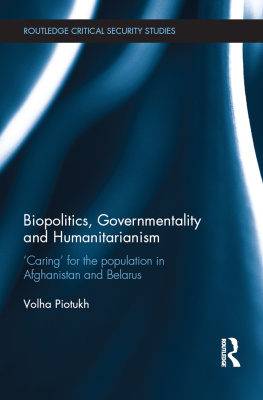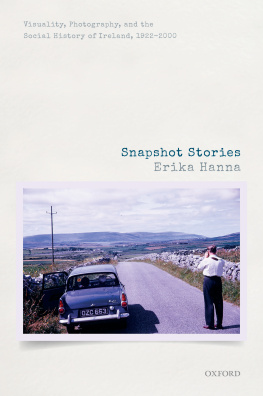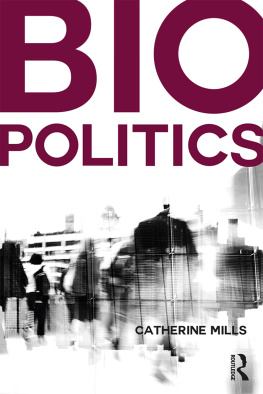Swatie - The New Normal: Trauma, Biopolitics and Visuality After 9/11
Here you can read online Swatie - The New Normal: Trauma, Biopolitics and Visuality After 9/11 full text of the book (entire story) in english for free. Download pdf and epub, get meaning, cover and reviews about this ebook. year: 2021, publisher: Bloomsbury India, genre: Religion. Description of the work, (preface) as well as reviews are available. Best literature library LitArk.com created for fans of good reading and offers a wide selection of genres:
Romance novel
Science fiction
Adventure
Detective
Science
History
Home and family
Prose
Art
Politics
Computer
Non-fiction
Religion
Business
Children
Humor
Choose a favorite category and find really read worthwhile books. Enjoy immersion in the world of imagination, feel the emotions of the characters or learn something new for yourself, make an fascinating discovery.
The New Normal: Trauma, Biopolitics and Visuality After 9/11: summary, description and annotation
We offer to read an annotation, description, summary or preface (depends on what the author of the book "The New Normal: Trauma, Biopolitics and Visuality After 9/11" wrote himself). If you haven't found the necessary information about the book — write in the comments, we will try to find it.
Swatie: author's other books
Who wrote The New Normal: Trauma, Biopolitics and Visuality After 9/11? Find out the surname, the name of the author of the book and a list of all author's works by series.
The New Normal: Trauma, Biopolitics and Visuality After 9/11 — read online for free the complete book (whole text) full work
Below is the text of the book, divided by pages. System saving the place of the last page read, allows you to conveniently read the book "The New Normal: Trauma, Biopolitics and Visuality After 9/11" online for free, without having to search again every time where you left off. Put a bookmark, and you can go to the page where you finished reading at any time.
Font size:
Interval:
Bookmark:

The New Normal
The New Normal
Trauma, Biopolitics and Visuality after 9/11
Swatie

BLOOMSBURY INDIA
Bloomsbury Publishing India Pvt. Ltd
Second Floor, LSC Building No. 4, DDA Complex, Pocket C 6 & 7,
Vasant Kunj, New Delhi, 110070
BLOOMSBURY, BLOOMSBURY INDIA and the Diana logo are trademarks of Bloomsbury Publishing Plc
First published in India 2021
This edition published 2021
Copyright Swatie, 2021
Swatie has asserted her right under the Indian Copyright Act to be identified as the Author of this work
All rights reserved. No part of this publication may be reproduced or transmitted in any form or by any means, electronic or mechanical, including photocopying, recording or any information storage or retrieval system, without the prior permission in writing from the publishers
This book is solely the responsibility of the author and the publisher has had no role in the creation of the content and does not have responsibility for anything defamatory or libellous or objectionable
Bloomsbury Publishing Plc does not have any control over, or responsibility for, any third-party websites referred to or in this book. All internet addresses given in this book were correct at the time of going to press. The author and publisher regret any inconvenience caused if addresses have changed or sites have ceased to exist, but can accept no responsibility for any such changes
ISBN: HB: 978-93-90077-29-8; eBook: 978-93-90077-31-1
2 4 6 8 10 9 7 5 3 1
Created by Manipal Digital Systems
To find out more about our authors and books visit www.bloomsbury.com and sign up for our newsletters
Contents
This book has been the labour of a long PhD programme at the Department of English, University of Delhi, India. It is the culmination of my research during the programme that led to a dissertation and beyond. This book would have been impossible without the steady encouragement and supervision of Dr Subarno Chattarji. He has not only been the best PhD supervisor I could have asked for but also a constant supporting and mentoring voice for efforts towards the book.
An important note of thanks is also due to Professor Udaya Kumar, whose inspiring work on Theory and general personal guidance helped shape the book. Thank you also to Professor Sambudha Sen for being a kind and guiding teacher in a tough time.
Many thanks to Dr N.A. Jacob, member of my PhD advisory board, for thorough inquiries and challenges to the central thesis of my dissertation. I would also like to thank Dr Baidik Bhattacharya for painstakingly reading the draft of the dissertation, encouraging me to publish and asking me to not hold back when I finally reach the goal. Dr Rochelle Pinto provided valuable comments and feedback during her tenure as a PhD advisory board member, for which I am grateful.
Thanks are also due to Dr Soumyabrata Choudhury and the two anonymous examiners of my PhD dissertation. Dr Choudhury conducted the PhD viva in such a manner that it gave me leads for my work on the book.
I acknowledge the motivation and guidance provided by Professor Christel Devadawson, Professor Shormishtha Panja, Professor Raj Kumar, Dr Rimli Bhattacharya, Dr Tapan Basu and other faculty members of the Department of English at the University of Delhi. Thanks also to the non-teaching faculty at the department for always being helpful.
Gratitude is further due to conference organisers at the University of Pennsylvania; the University of California, Irvine; the University of Delhi; and the University of California, Riverside, where I presented a draft of my doctoral research. I am also grateful to the Stanford University Library and its helpful staff, where I conducted research for a brief while for the book.
I am thankful to my current employers at Lady Shri Ram College for Women, University of Delhi: Principal Dr Suman Sharma, and friends and colleagues at the Department of English. I have truly learnt a lot from them. Colleagues at the Department of English at Jesus and Mary College, University of Delhi, my previous employers, are also to be thanked.
I am thankful also to Professor R.K. Agnihotri and Professor Pushpinder Syal for showing me the benefits of getting published.
I would also like to humbly thank my publisher at Bloomsbury, Chandra Sekhar, and Shreya Chakraborti, editorial manager. Thanks to Aathira Ajitkumar for editing the book.
Heartfelt gratitude is due to my friends, whose constant efforts kept me content and fulfilled despite my work on a depressing topic: Kashish Dua, Ishita Singh, Rashee Mehra, Rohini Deb, Priyankee Saikia, Sahiba Sethi and Aim. I am thankful for the informal editorial advice from Rubina Malhotra and Anirudh Nair.
This book is dedicated to the multiple efforts, known and unknown, of my family. Lots of gratitude is due to my parents, Ravi, Kritika and my dogs Plato and Sappho. This book would not have been possible without them.
Despite the efforts of all of the people mentioned earlier, all shortcomings in the book are my own.
The strength of the crisis of 9/11 can perhaps be gauged from the narratives and images it immediately recalls. The very appellation 9/11 brings to mind an entire sea of associations codified by officially sanctioned timelines, reportage, images and aspects of daily life. It also brings to mind not just wars against Iraq and Afghanistan but also invasions and destructions of entire peoples and nations, mass deportation, anti-immigration policies, racial profiling, corporate media aiding or framing government propaganda, the financial meltdown and so on. The term crisis implies not only catastrophe, as 9/11 is undoubtedly one, but also aptly refers to the situation, given its second (medical) meaning as a crucial juncture leading to either aggravation or amelioration. With 9/11, it is clear that there occurred a shift on multiple levels, indicating that such a stage had been reached.
Even within the realm of popular culture and art, this multiple sense of a crisis is depicted in imaginative ways. For instance, a panel in Art Spiegelmans In the Shadow of No Towers (2004) offers a look into various discourses that led to and sustained a post-9/11 moment. The graphic novel progresses from representing the author/artist on 9/11 as facing the calamity and searching for his daughter Nadja at school to his traumatic heritage (Spiegelman is the offspring of Holocaust victims) and traumatic past becoming inseparable. One of the earlier panels, titled the new normal, shows a family of three in the routinised act of watching television in their living room (Spiegelman 1). The date on the calendar reads 10 September. The second image is from the next day, showing the same act with the difference that the family appears to have become electrified zombies. The third panel, unlike the first two, does not offer a date. Instead, it shows the same family and, additionally, the American flag. The lack of a date reference indicates the traumatic suspension of all temporality, while the flag becomes a symbol of not just American patriotism but also American-centricity.
Nonetheless, what is perceived through popular literature is the reflection of a rearrangement in the wake of a crisis. Power is a reconfigured in tandem with governmentalised rationalities that shape the social fabric in newer forms. This idea, of course, does not entail an argument that has been made about 9/11 as ground zero, a loss of innocence or a tabula rasa (Mishra; Stamelman 13). In fact, this very logic of blankness is what is specifically new to this rationality as a method of organisation, of orchestration of the us and them, and of a general reconfiguration of power relations. The argument also does not entail that 9/11 is thus a non-event, one among a long line of atrocities of modernity. Instead, my study states that 9/11 becomes what it is due to both the precipitation of earlier configurations and their crises, leading to a reorganisation of normality.
Next pageFont size:
Interval:
Bookmark:
Similar books «The New Normal: Trauma, Biopolitics and Visuality After 9/11»
Look at similar books to The New Normal: Trauma, Biopolitics and Visuality After 9/11. We have selected literature similar in name and meaning in the hope of providing readers with more options to find new, interesting, not yet read works.
Discussion, reviews of the book The New Normal: Trauma, Biopolitics and Visuality After 9/11 and just readers' own opinions. Leave your comments, write what you think about the work, its meaning or the main characters. Specify what exactly you liked and what you didn't like, and why you think so.









